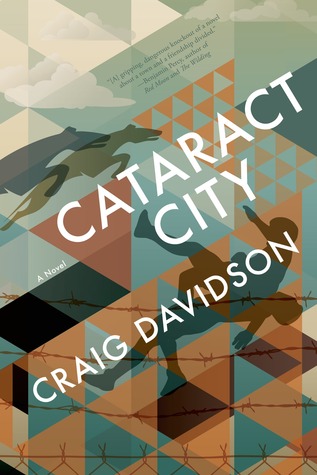
Not long ago, a galley of Craig Davidson’s forthcoming novel Cataract City showed up at my door. I haven’t yet read it, but a quick glance at the back cover motivated me to send a quick email to a friend indicating that it might be up his alley. That certainly had something to do with the book’s plot, which involved grit and corruption in a Canadian town, but it also had more than a little to do with the blurb on the back from on Chuck Palahniuk, who’s become–for said friend and for me–a deeply reliable source of blurbs.
Gary Shteyngart is probably the reigning champion for blurbing ubiquity, though A.J. Jacobs has also written memorably about blurbing prolifically. And while I’ve certainly enjoyed books that each of these writers has blurbed, the authors whose names tend to catch my eye are a slightly different group.
Palahniuk is one. While I’ve enjoyed some of his books and been underwhelmed by others, I find that his name on a book’s jacket to be a pretty reliable indicator of me having positive feelings towards it after reading. Some of this may come from the fact that the Portland writing circles in which he runs abound with talented writers, but I also think that he’s drawn to a blend of pulp smarts and literary craft. (Palahniuk was where I first heard of Amy Hempel, for instance.) And glowing quotes have pointed me in the direction of Lidia Yuknavitch and Monica Drake, for which I am mightily grateful.
I find a similar approach at work in the blurbing of Junot Díaz. Quotes from him can be seen on realistic works not unlike his own fiction, but he’s also written glowingly about Kristen Cashore’s YA fantasy novel Fire and Samuel R. Delany’s Through the Valley of the Nest of Spiders. In terms of Delany, it might also be that Diaz has never shied away from having roots in reading science fiction; much like fellow Delany blurber Jonathan Lethem, it’s a case of someone
And when we’re talking about iconic contemporary writers who blurb, I should also cite Eileen Myles, whose endorsement generally signifies a good, challenging, often experimental read. (Think Suzanne Scanlon; think Maggie Nelson.) That sense of a shared aesthetic never hurts, and it’s proof that, at least for me, the practice of blurbing remains an effective one.
Follow Vol. 1 Brooklyn on Twitter, Facebook, Google +, our Tumblr, and sign up for our mailing list.
